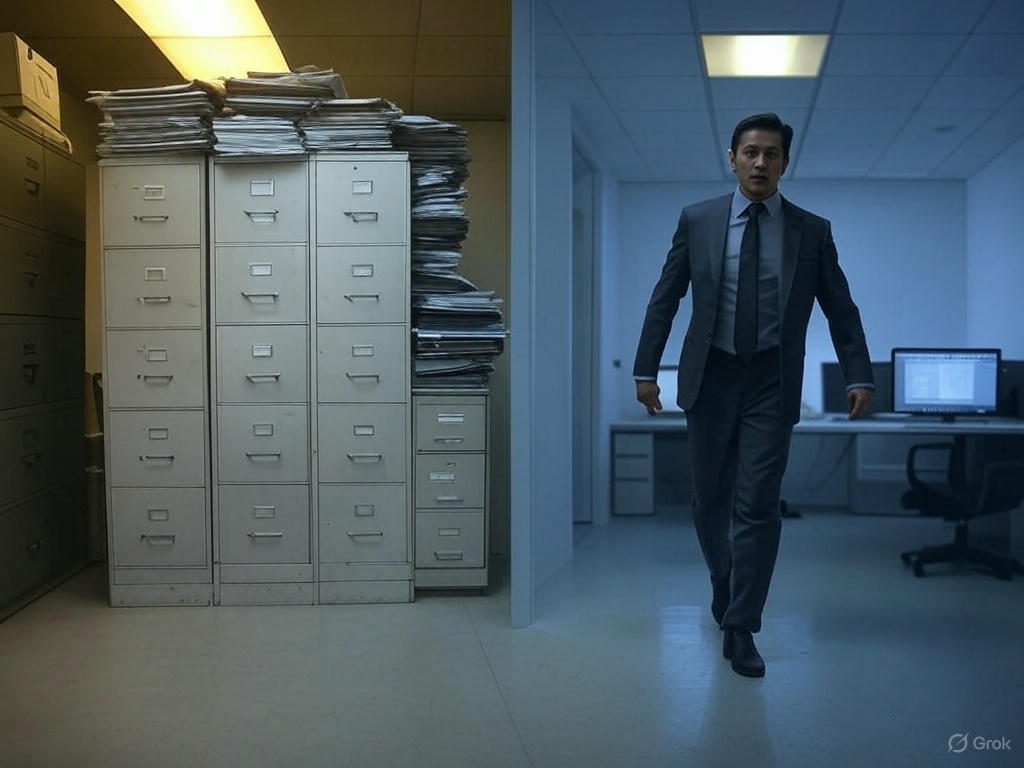The filing cabinet wasn’t just furniture. It was a philosophy.
For decades, organizations built their processes, hierarchies, and thinking around paper. Forms in triplicate. Sign here. Initial there. File under “Miscellaneous.” The paper wasn’t just a medium—it was the message, the culture, the way things got done.
But paper has weight. It has friction. It resists change and collaboration in ways we’ve normalized but shouldn’t accept anymore.
The shift from paper to digital isn’t a technology project. If you’re treating it like one, you’ve already failed. It’s a culture project that happens to involve technology. The best scanner in the world can’t fix broken thinking.
Start with “why.” Not why you’re digitizing (that should be obvious by now), but why your current paper processes exist in the first place. Which ones actually create value? Which ones are just organizational barnacles that accumulated over decades? The cultural resistance you’ll face isn’t about the technology—it’s about the identity wrapped up in how things have always been done.
Technology selection comes next, but tread carefully. The shiniest vendor presentation often leads to the dustiest unused software. Ask: Does this technology adapt to how humans actually work, or does it force humans to adapt to it? Does it solve for the edge cases or just the easy 80%? Will it grow with you or constrain you? The technology that acknowledges human messiness will outperform the one that demands human perfection.
Training isn’t about buttons and features. It’s about storytelling. People need to see themselves in the new digital future. Create heroes, not users. Celebrate the early adopters. Make the transition visual. Document the paper you’re eliminating—stack it to the ceiling as a monument to what you’re leaving behind. People change when they feel emotional connection to the outcome, not when they receive a training manual.
The most successful digital transitions are led by empathy, not efficiency. Yes, you’ll save money. Yes, you’ll work faster. But the real transformation happens when you understand that Sally in accounting doesn’t resist digital because she’s change-averse—she resists because paper gives her certainty, control, and a tangible record of her contributions.
The question isn’t whether you’ll go digital. The question is whether you’ll do it thoughtfully or reactively. Whether you’ll use this transition to rethink work itself or merely digitize broken processes.
When you remove the paper, what remains? What becomes possible when information flows instead of sits? That’s the leap worth taking.

